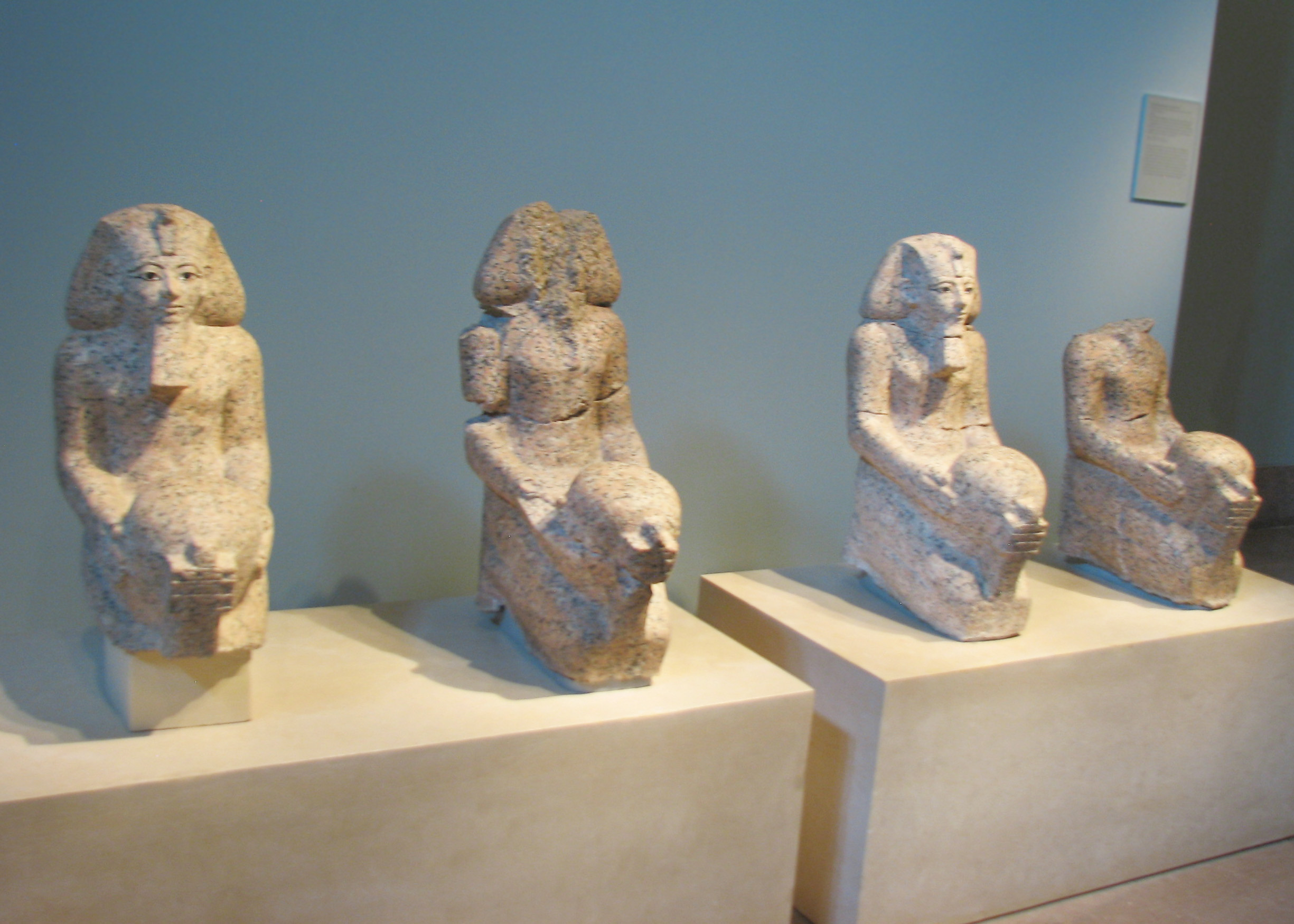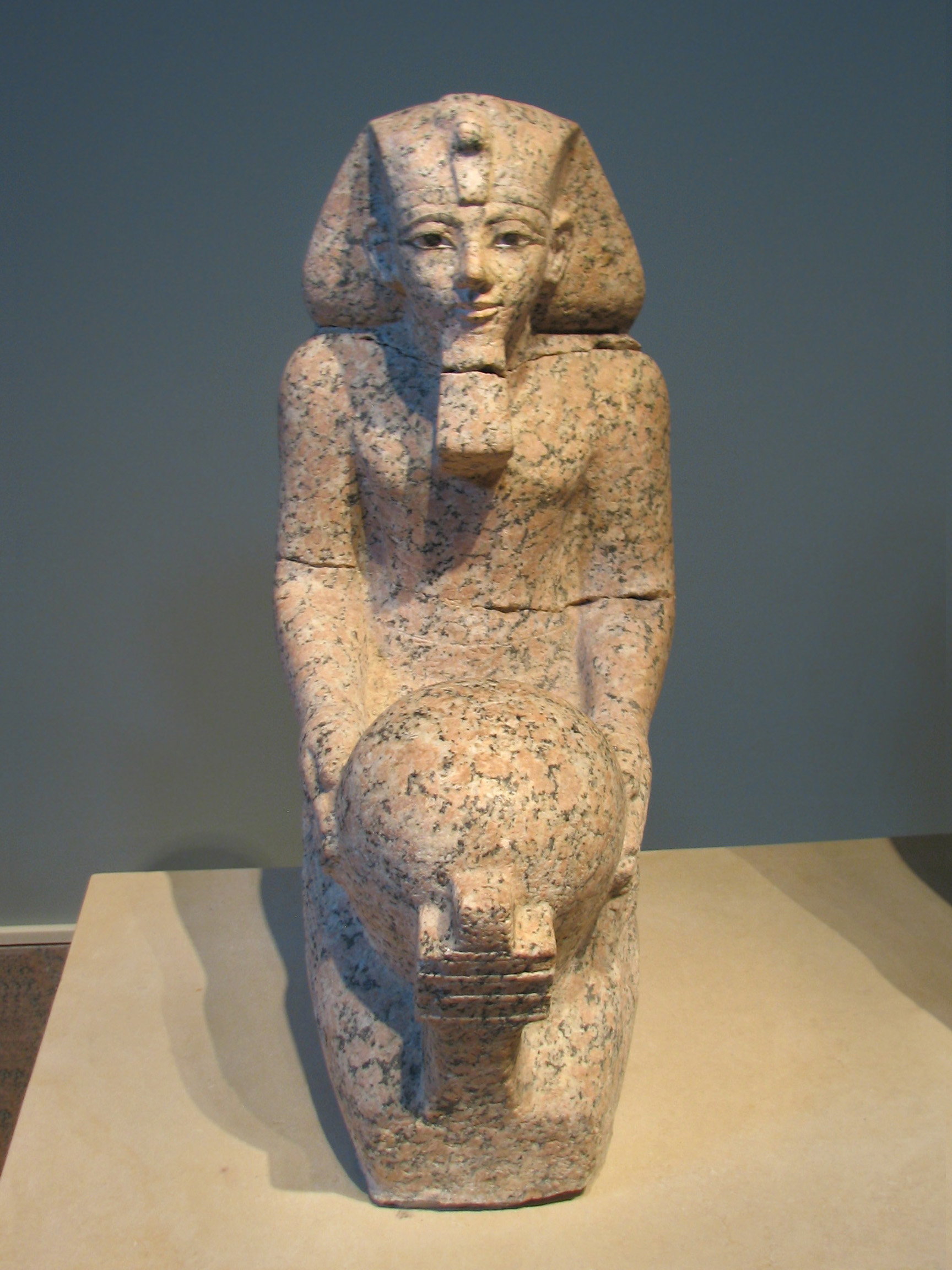
Four Kneeling Statues of Smaller Size
Dynasty 18, joint reign of Hatshepsut and Thutmose III, (ca. 1473-1458 B.C.E.)
Granite, from Thebes, originally from Hatshepsut's temple at Deir el-Bahri, excavated mostly in the so-called 'Hatshepsut Hole,' MMA excavations, 1922-23, 1926-27
Rogers Fund, 1923 (23.3.1, 2)
Rogers Funds, 1931 (31.3.160, .162)




